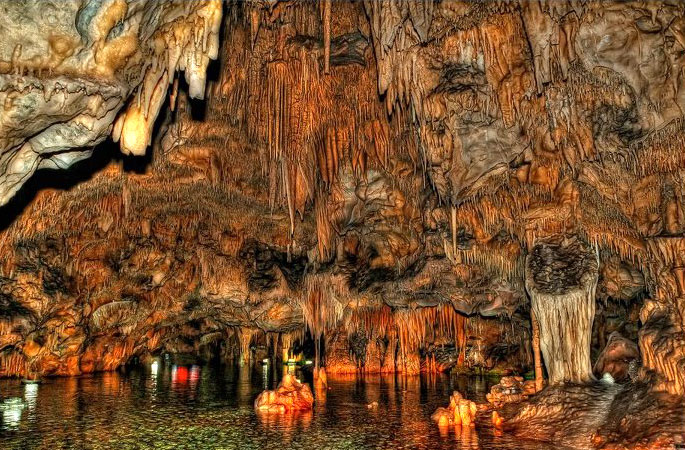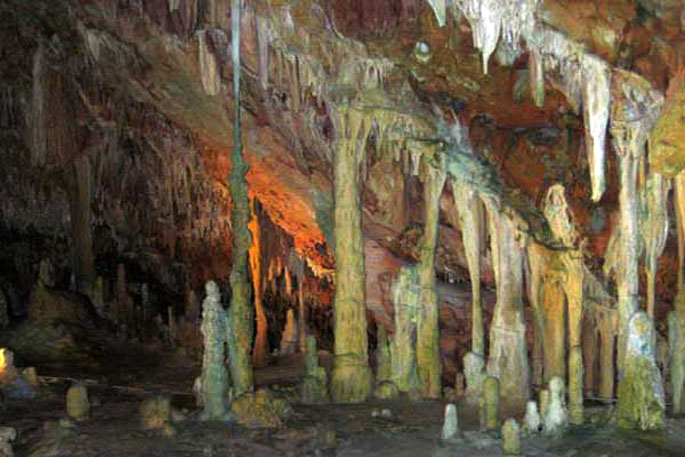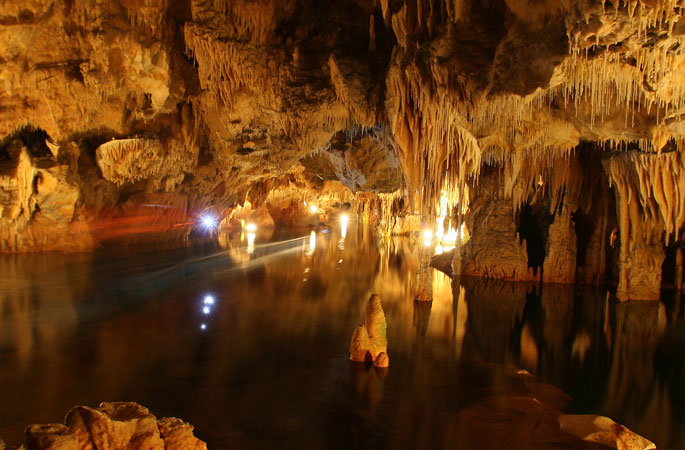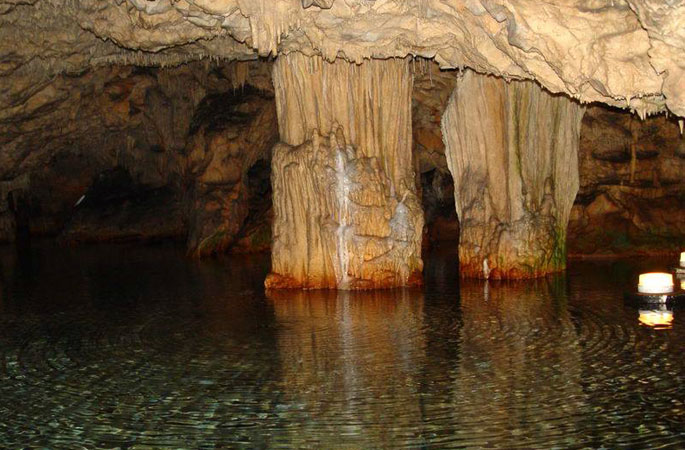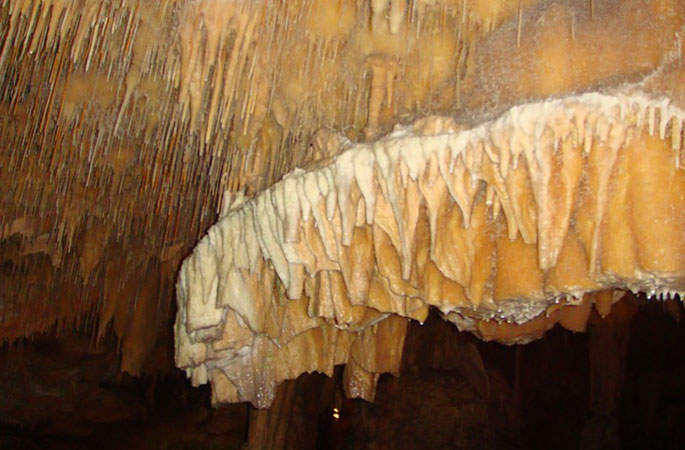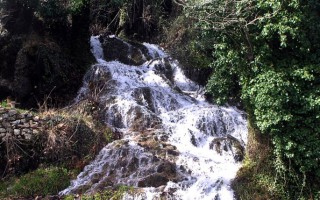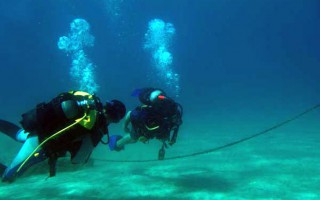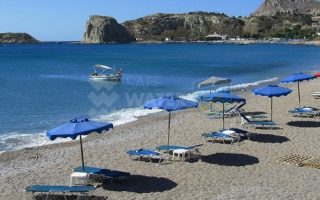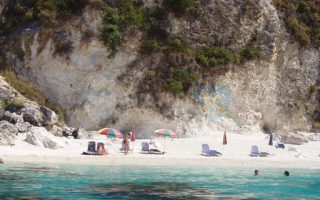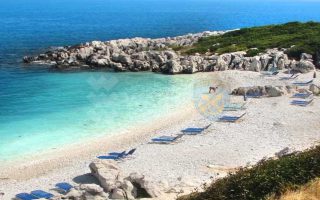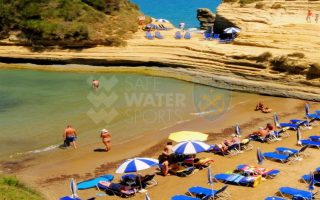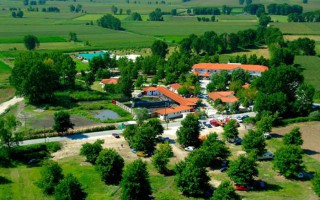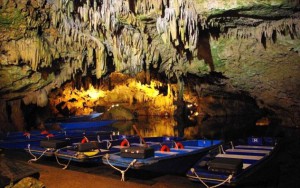 Just south of Aeropolis, at Diros bay, is the Glyfada cave (or Vlychada cave). It offers visitors a spectacular beauty hidden in the depths of the earth. It is a sea cave of exquisite beauty that is considered to be the best from the three most beautiful sea caves in the world. It is a tour sight and is 3.100 meters in length. Visitors can go through dry and wet areas with a plethora of arcades and chambers. Moreover it possesses a sensational, colorful mineral decor of compelling column shaped stalactites and stalagmites. The tour follows a circular route and the wet area, 2.800 meters in length, takes place solely by boat. The cave exploration started in 1949 and today over 10.000 m2 have been explored. The Glyfada Cave at Diros is currently considered the largest and most famous sea cave of the country.
Just south of Aeropolis, at Diros bay, is the Glyfada cave (or Vlychada cave). It offers visitors a spectacular beauty hidden in the depths of the earth. It is a sea cave of exquisite beauty that is considered to be the best from the three most beautiful sea caves in the world. It is a tour sight and is 3.100 meters in length. Visitors can go through dry and wet areas with a plethora of arcades and chambers. Moreover it possesses a sensational, colorful mineral decor of compelling column shaped stalactites and stalagmites. The tour follows a circular route and the wet area, 2.800 meters in length, takes place solely by boat. The cave exploration started in 1949 and today over 10.000 m2 have been explored. The Glyfada Cave at Diros is currently considered the largest and most famous sea cave of the country.
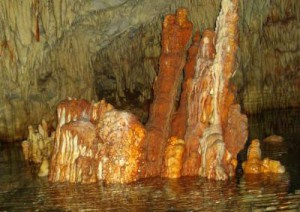 Also known as Vlychada, the Glyfada cave is located on the west coast of the Laconic Peninsula, at Diros bay. The cave consists of a subterranean river that runs through the cave and empties into the sea 23 meters to the right side of the cave’s entrance that is half a meter tall from water level. It is the first cave of this specific area and the best from the three most beautiful sea caves in the world. It possesses a sensational, colorful mineral decor of compelling column shaped gray and white stalactites and stalagmites. It consists of dry and wet areas with a plethora of arcades and chambers, the majority of which is covered in sea water. It is the largest and most well-known cave of the country. It is 3.100 meters in length with only 300 of these being dry. For tour purposes, two new entrances were opened in addition to the existing one. The tour follows a circular route and lasts 45 minutes and the wet areas are solely toured by boat. The cave has a stable temperature of 18⁰ C. The water level fluctuates depending on the outdoor weather conditions, with a maximum water depth of 15.5 meters and a temperature of 12⁰ C. Below the entrance of the cave is Diros bay, with its whitewashed pebbles and crystal clear waters.
Also known as Vlychada, the Glyfada cave is located on the west coast of the Laconic Peninsula, at Diros bay. The cave consists of a subterranean river that runs through the cave and empties into the sea 23 meters to the right side of the cave’s entrance that is half a meter tall from water level. It is the first cave of this specific area and the best from the three most beautiful sea caves in the world. It possesses a sensational, colorful mineral decor of compelling column shaped gray and white stalactites and stalagmites. It consists of dry and wet areas with a plethora of arcades and chambers, the majority of which is covered in sea water. It is the largest and most well-known cave of the country. It is 3.100 meters in length with only 300 of these being dry. For tour purposes, two new entrances were opened in addition to the existing one. The tour follows a circular route and lasts 45 minutes and the wet areas are solely toured by boat. The cave has a stable temperature of 18⁰ C. The water level fluctuates depending on the outdoor weather conditions, with a maximum water depth of 15.5 meters and a temperature of 12⁰ C. Below the entrance of the cave is Diros bay, with its whitewashed pebbles and crystal clear waters.
The cave was discovered by Petros Arapakis and its exploration started in 1949 by Ioannis and Anna Petrocheilou. Bones of prehistoric oxen, hippopotamus, hyenas and of other animals as well as ceramic utensils of the prehistoric times were found in the cave. Today over 10.000 m2 have been explored. Due to its natural marine entrance, the cave was not use by humans.
Source: www.mythicalpeloponnese.gr

